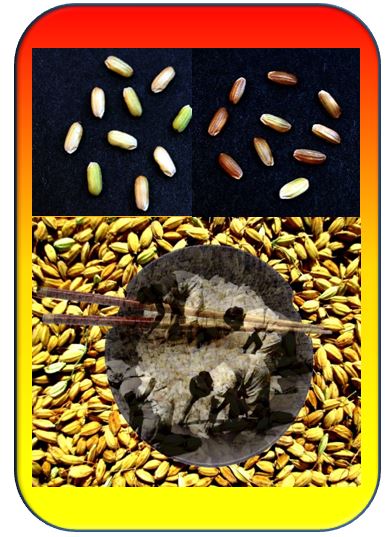Landraces-Weeds: The Two Faces of Domestication
What is the topic of this research?
When agriculture was invented around 10000 ago, this represented a milestone for the development of human culture, because humans had not to migrate in order to find their food. Stable settlements allowed for division of labour culminating in the rise of states. Without the domestication of plants, we would not be there, where we are now. However, domestication did not happen in one sweep, but was a long process. The traces of domestication can still be found in the genes of old landraces or the wild ancestors of crop plants. In the early 20th century, the Russian geneticist Vavilov explored the remotest areas of our planet to collect these traces and to assemble them in the first seed bank in St. Petersburg. By comparing different domestication histories, he succeeded to predict certain traits - similar to the Russian chemist Mendeleyev, whose periodic system allowed to predict properties of elements that were still to be discovered, Vavilov was able to predict, how certain ancestral stages of our recent crop plants looked like. Sometimes, the move goes in the opposite direction, when a crop plant turns feral and adopts a weedy lifestyle. When we want to achieve a sustainable and environmentally safe control of weeds, we have to get more insight into these evolutionary processes in order to develop more efficient strategies of weed resistance management.
How did this idea develop?
In our Botanical Garden, we have established a Gene Bank for Crop Wild Relatives - a research net together with three more Botanical Gardens, on behalf of the Federal Ministry for Nutrition, Agriculture and Consumer Protection. Thus, for these species, the remaining biodiversity was collected all over Germany. In the next step we want to develop this diversity for application, comparable to our project on the European Wild Grape. In times of globalisation, it is not sufficient to stick to national borders. We, therefore have been working already for some time on subtropical or tropical crops. Here, old landraces very often harbour a pronounced stress resilience, which is interesting for the breeding of new crops. In context with our research on the evolution of rice, we also encountered the opposite direction. Several weeds, such as Weedy Red Rice, which meanwhile has infested numerous paddies and causes huge yield losses, are actually feral crops, where individual genes originating from Crop Wild Relatives have started to lead an autonomous life, such that a crop turns into a pertinent weed.

